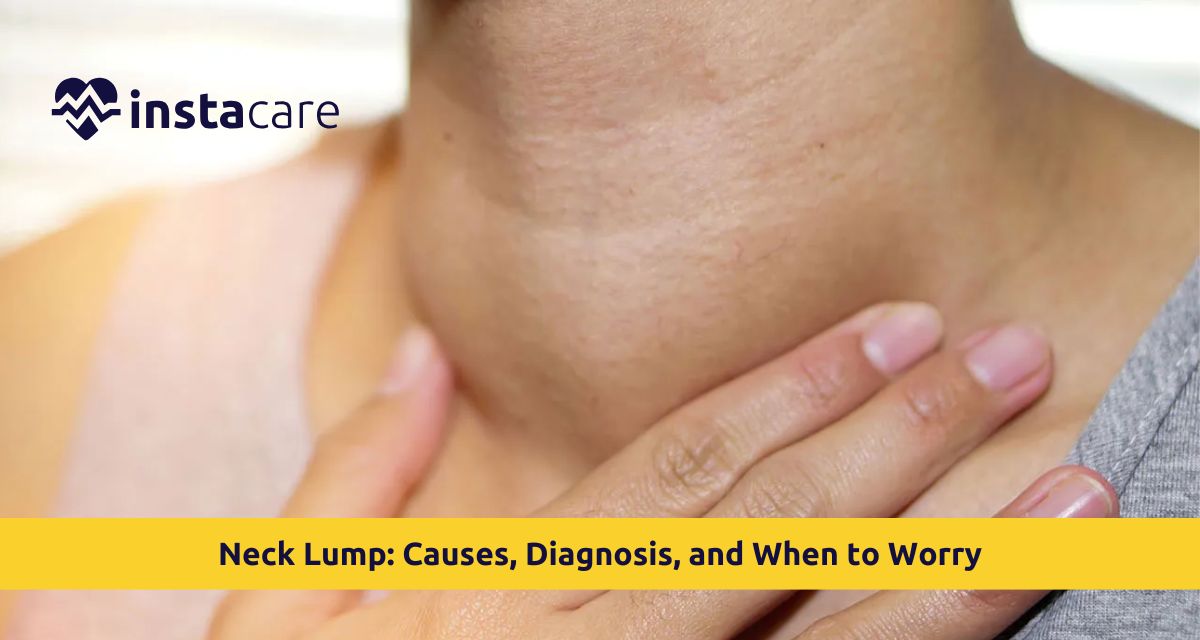What Is a Neck Lump?
Common Causes of Neck Lumps
- Swollen Lymph Nodes: Most common cause, swollen lymph nodes in neck is a secondary response of the body to infection. Infection by viral illness of common cold, influenza, or mononucleosis frequently causes lymphadenopathy. Streptococcal infection or dental abscess produces reactive lymphadenopathy. They are typically tender cervical nodule that is mobile and potentially palpable as neck mass during remission of infection.
- Thyroid Disorders: Thyroid lump in neck is secondary to thyroid nodules, goiter, or thyroid disease. They are generally mobile with swallowing and lower anterior region of the neck. They are generally benign but some require work-up.
- Cysts: Sebaceous cysts are secondary to plugged oil gland and ensuing soft lump in neck with keratin contents. Knowledge about the neck cyst vs tumor characteristics—cysts are generally mobile, smooth, and slowly increasing.
- Lipomas: Fleshy, soft masses of flesh, benign fat tumor. They grow very slowly and cause little more than a cosmetic problem.
- Cancer: A neck lump is not common but could be caused by thyroid cancer, lymphoma, or metastatic neoplasm from another site. Malignant tumors are fixed in position on the deep tissue, are not painful, and do not move. They will continue to enlarge and will not go away by themselves.
Symptoms to Watch For
Alarming Features:
- Painful neck lump longer than 2-3 weeks should be evaluated, especially if it is growing
- A hard lump in neck that is fixed and involves underlying tissues is malignant
- Lumps with hoarseness, dyspnea, or respiratory stridor should be immediately evaluated
Associated Symptoms:
- Sudden weight loss, night sweats, long-standing fever, or inexplicable tiredness accompanying the development of a lump in the neck can suggest sickness in the body
- Long-standing change of voice, long-standing cough, or earache on the same side of the lump should be evaluated
Progressive Changes:
- Lumps that develop faster or with altering color, shape, or texture must be presented to a physician immediately
Read More: 12 Proven Home Remedies For Neck Wrinkles
How Doctors Diagnose a Neck Lump?
Physical Exam
Medical History
Imaging Tests
- Most common most typical first imaging test is usually ultrasound with detailed description of lump anatomy
- CT scan or MRI is reserved for overall visualization of internal anatomy if needed
Lab Tests
Biopsy Methods
- Fine needle aspiration (FNA) is fine needle aspiration of cells for microscopy
- Core needle biopsy aspirates tiny amounts of tissue
- Excisional biopsy is removal of entire lumps for diagnostic confirmation in cancer suspicion
Treatment Options
- Observation: Benign swelling, particularly small lipomas or reactive nodes, require only to be observed and not treated.
- Antibiotics: Infected bacterial neck lymph nodes or abscesses are treated with the relevant antibiotics. Abscesses should be drained.
- Care of Thyroid: Neck thyroid mass ranges from wait and watch status in small non-neoplastic nodules to excision in case of suspicious large nodules.
- Surgical Removal: Symptomatic lipomas, recurrent symptomatic cysts, suspicious masses, or confirmed cancer usually require surgical removal.
- Cancer Treatment: Cancer lump in neck can be treated by surgery, radiation, chemotherapy, or multimodal therapy depending on the size and nature of cancer.
- Symptomatic Relief: Warm baths, fluids, and over-the-counter pain medication alleviate painful inflammatory lumps.
When to See a Doctor
Emergency Evaluation Necessary:
- Get an immediate doctor visit for lumps that are causing difficulty breathing or swallowing
- Quickly growing masses
- Severe pain and high temperature
Obtain Early Consultation:
- Visit your physician for neck lump symptoms which persists more than 2-3 weeks
- Fixed hard nodule of the neck
- Lump with unexplained weight loss or night sweats
- More than two-week hoarseness
Prevention and Self-Care Tips
- Infection Prevention: Hand washing frequently, not sharing food utensils, and keeping vaccination up-to-date to prevent infection-induced reactive lymph node enlargement.
- Healthy Lifestyle: Refrain from smoking and moderate alcohol intake as both are cancer risk enhancers. Follow a healthy diet that enhances immune status.
- Daily Self-Examination: Become comfortable with daily neck anatomy by gently palpating to identify early new bumps.
- Dental Hygiene: Take care of your oral health by brushing, flossing, and having regular dental checkups to prevent infection leading to swelling in the neck.
Conclusion

